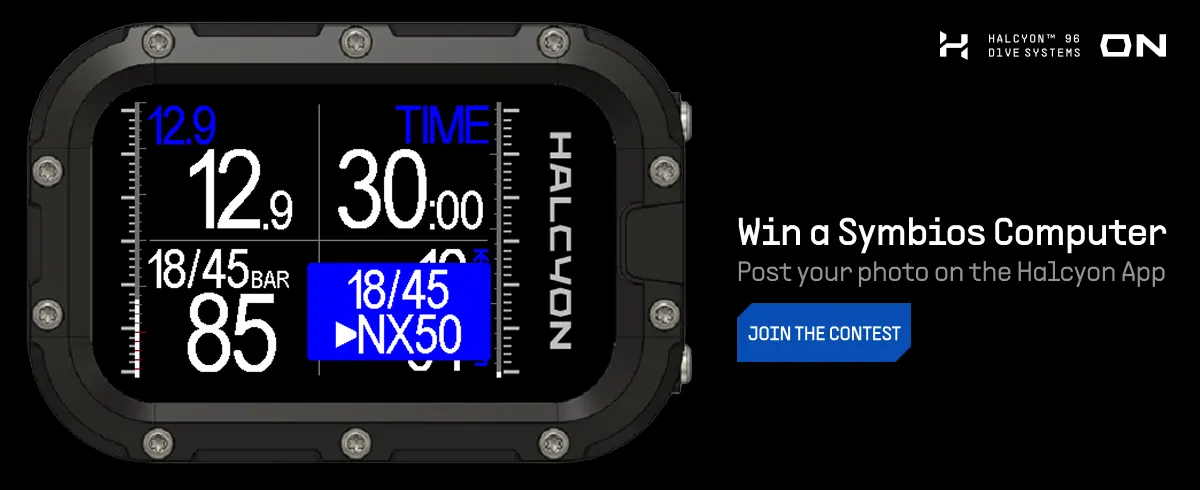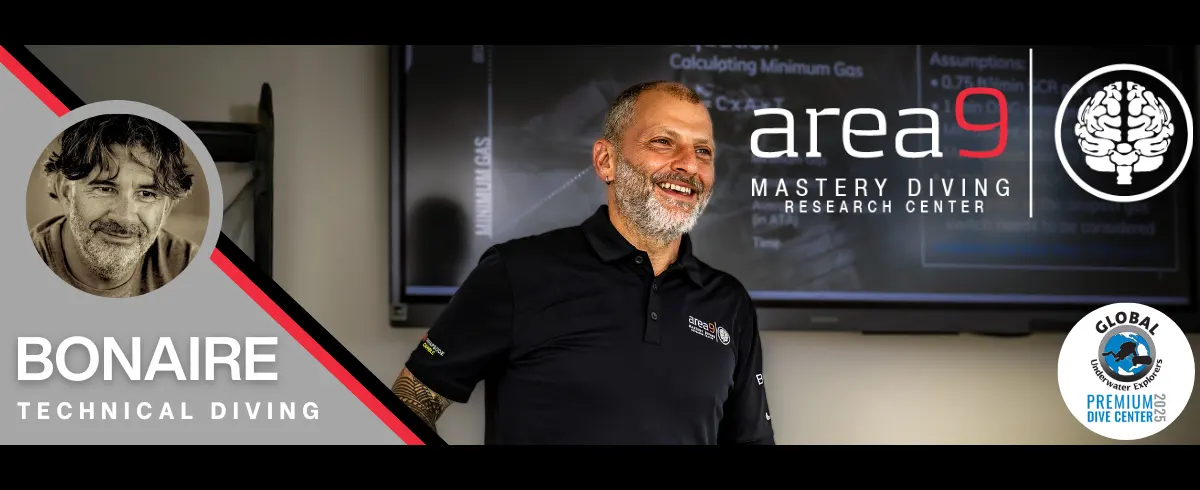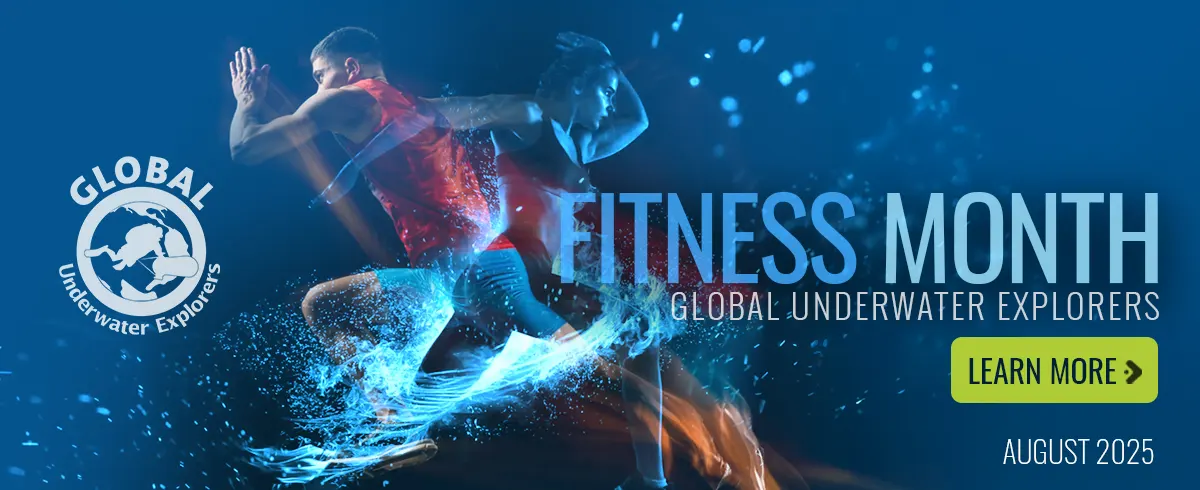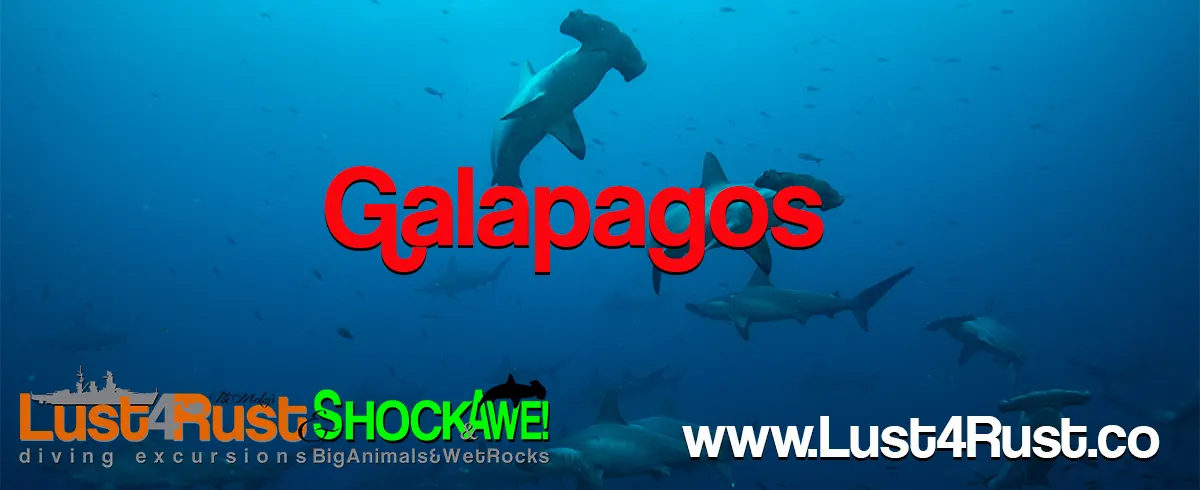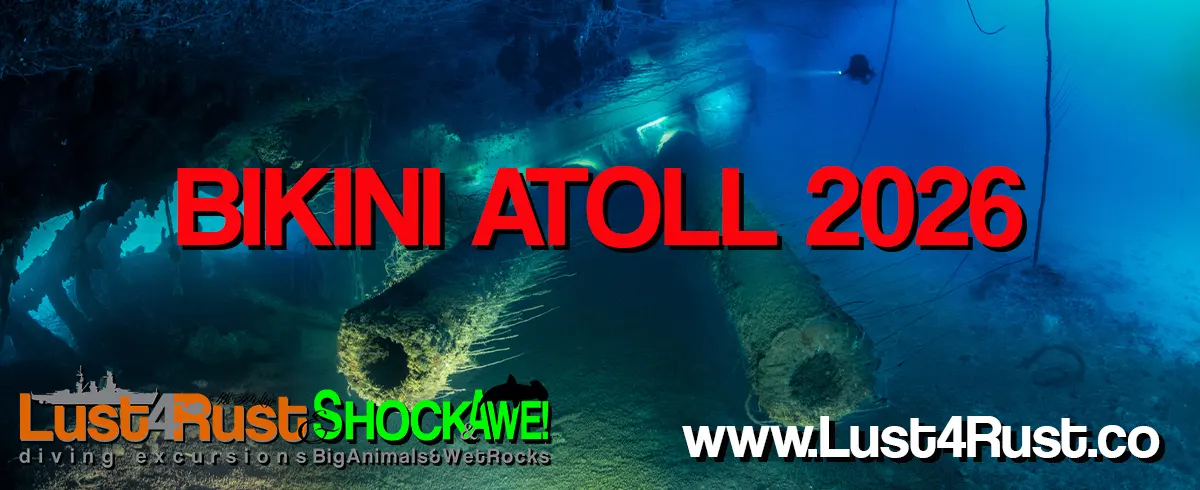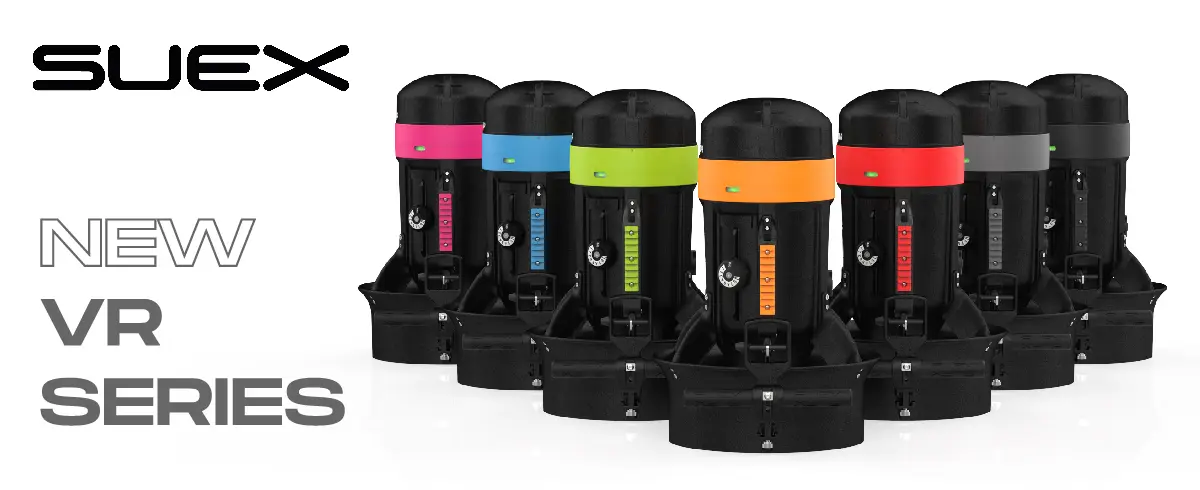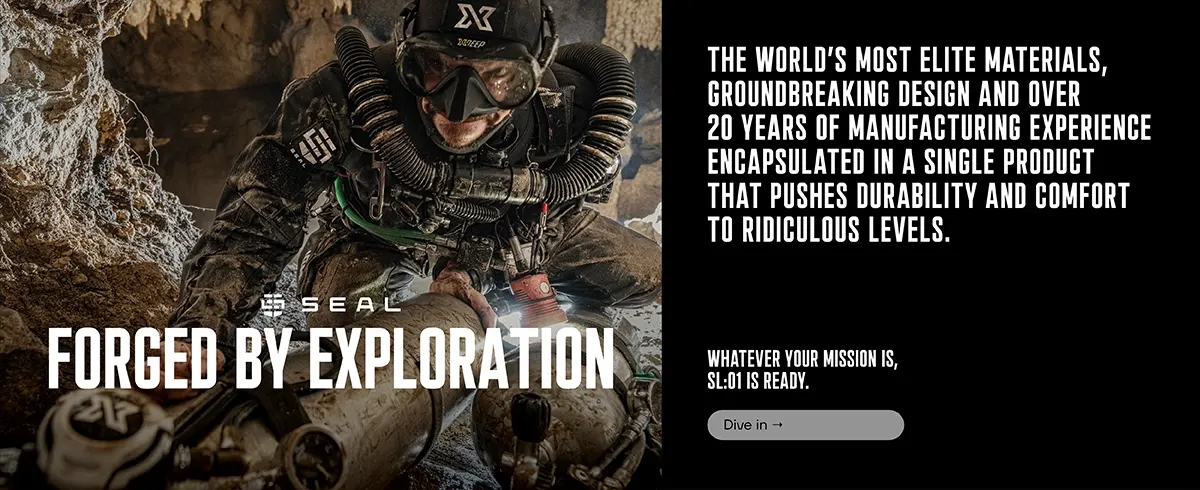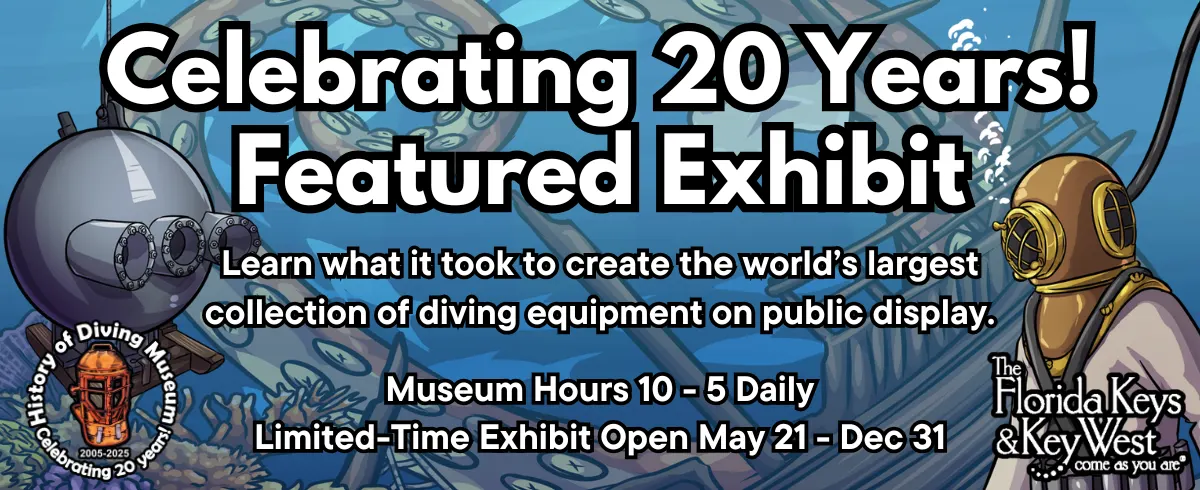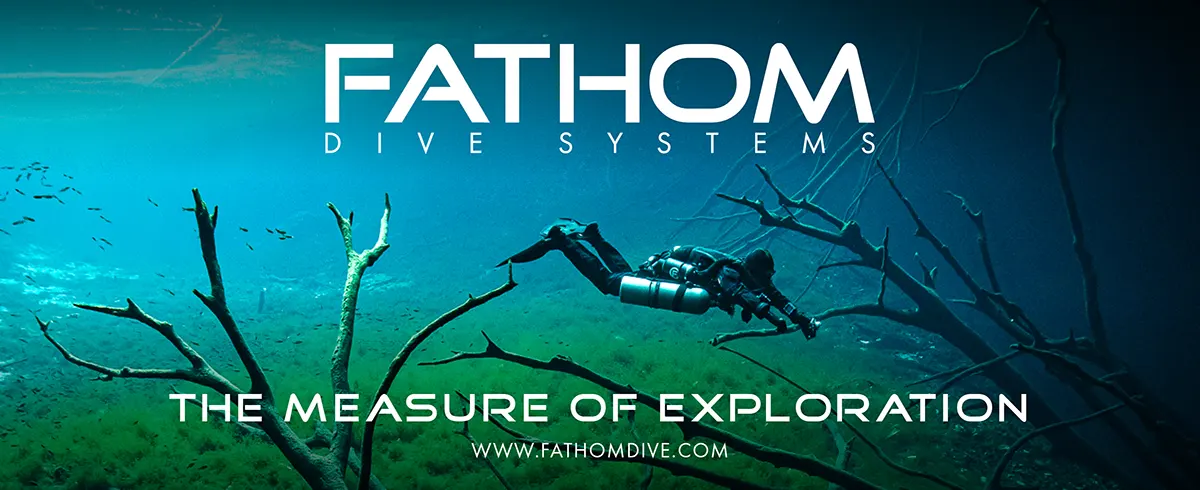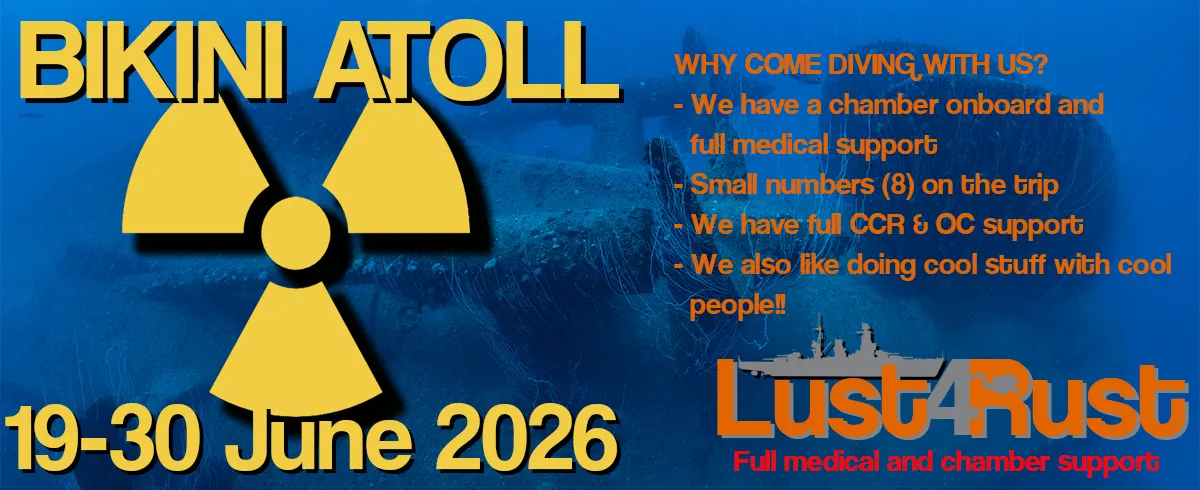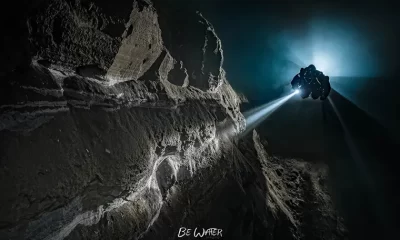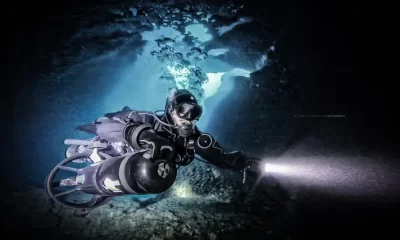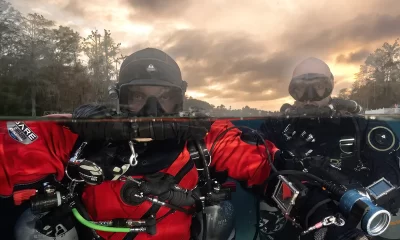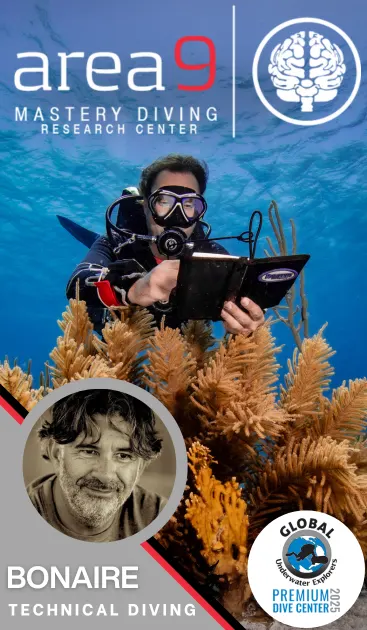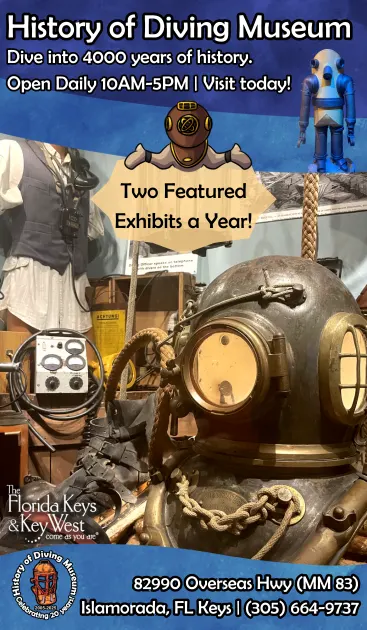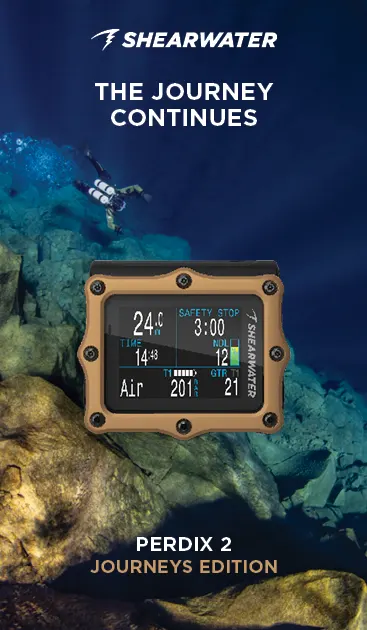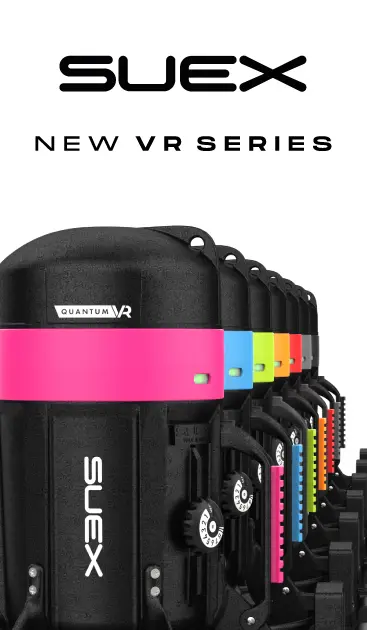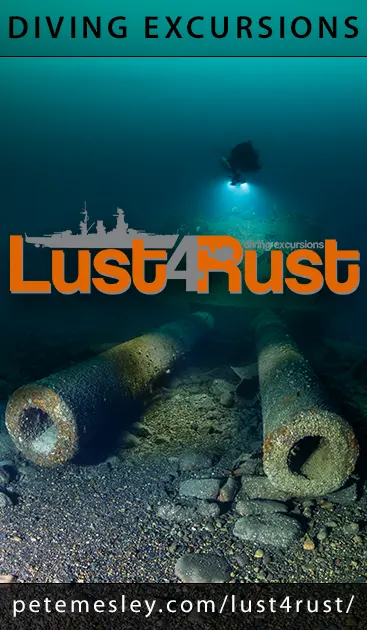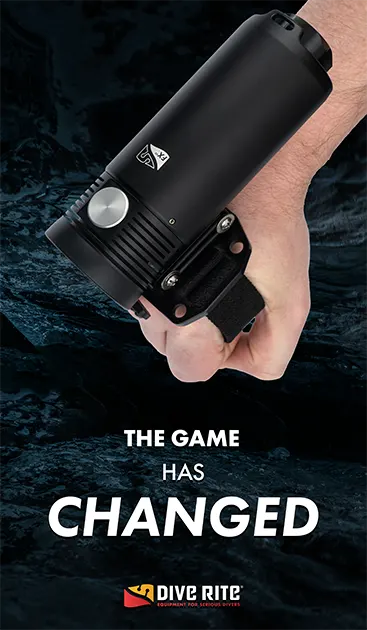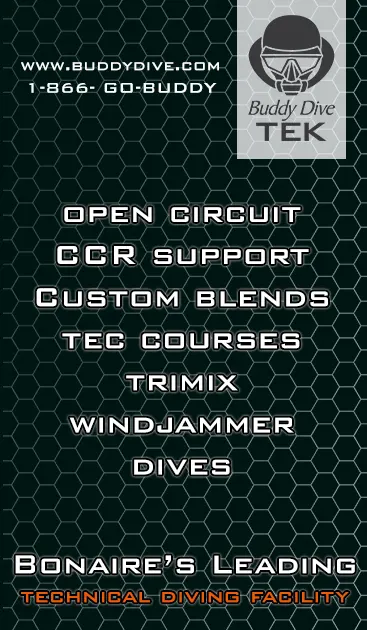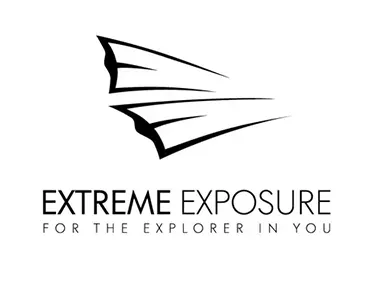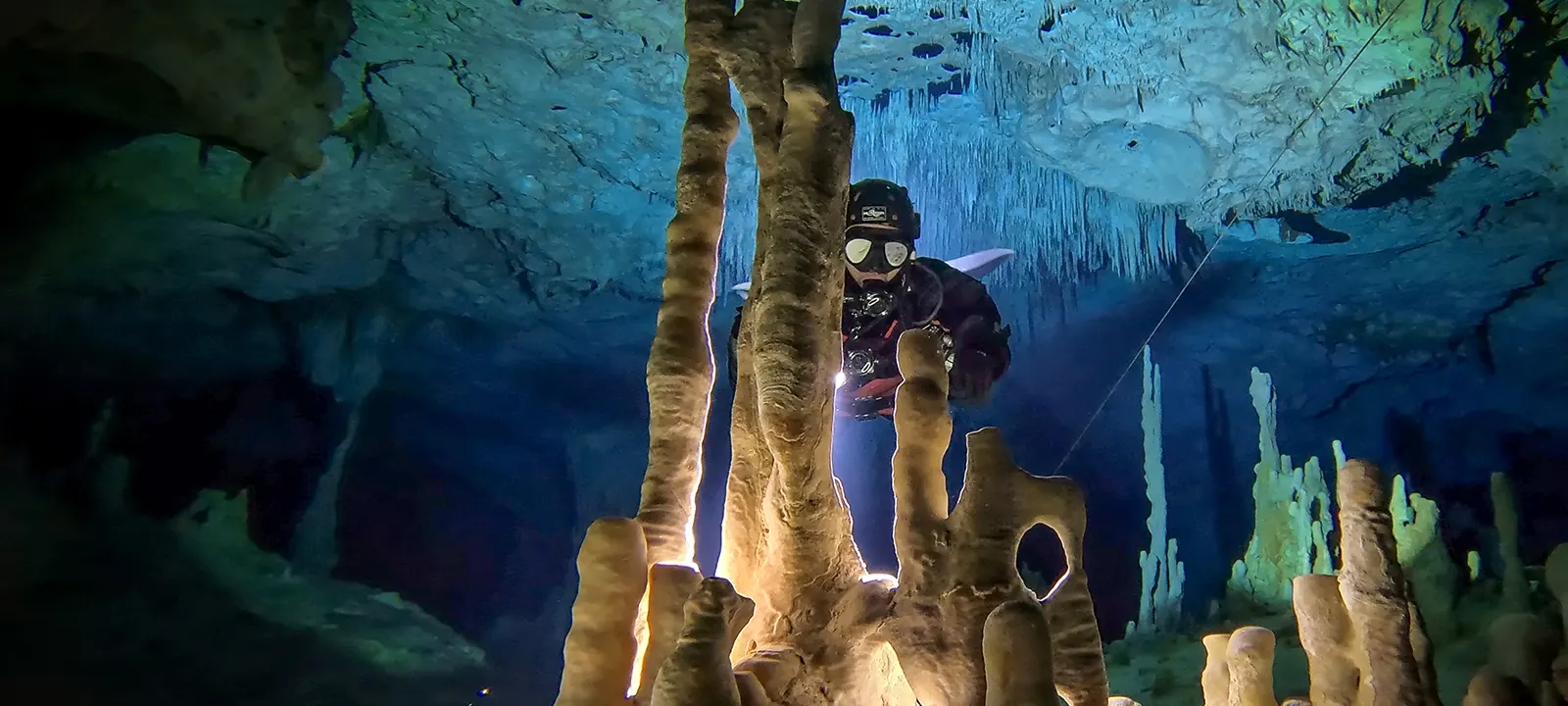
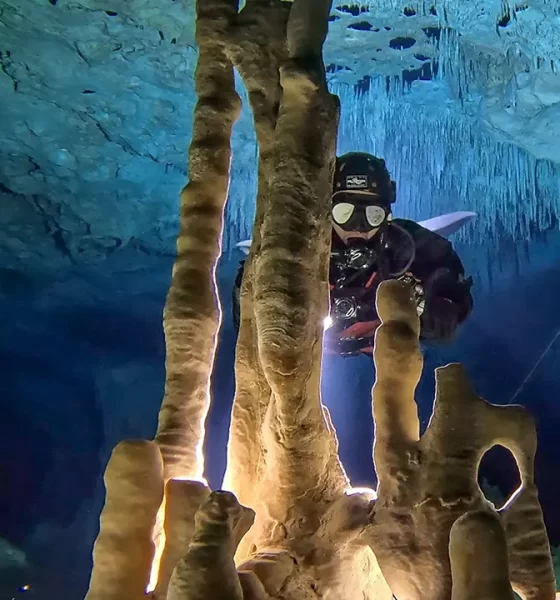
Community
Can You Really Make Diving a Day Job? The Realities of Full-Time Tech Instruction
THE TALKS. A Round Table Rhetoric with Stratis Kas. Lead image: Selfie session in Xulo to celebrate this place’s beauty and fuel our marketing magic. Photo by Audrey Cudel.
Featuring: JP Bresser, Audrey Cudel, Marissa Eckert & Kevin O’Brien
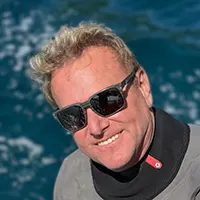
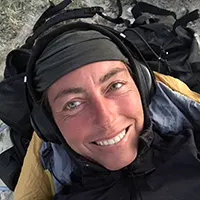
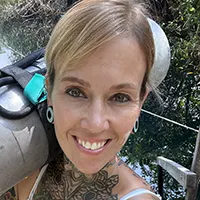
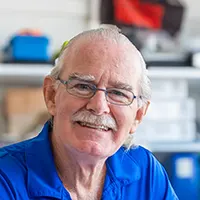
This episode brings together four elite, full-time technical and rebreather diving instructors as they confront the toughest questions in the industry today. Dive into their world of strict safety measures, rigorous re-qualification systems, and smart strategies for rebreather diving. This conversation is packed with real-world data, nuanced safety protocols, and the tactical mindset that drives successful technical dive training.
If you’ve ever wondered whether this could be your path, know that this isn’t just a crash course—it’s an in-depth analysis that might redefine your life choices. Discover the technical truths behind a full-time dive instruction career. The deeper you go, the sharper the truths.
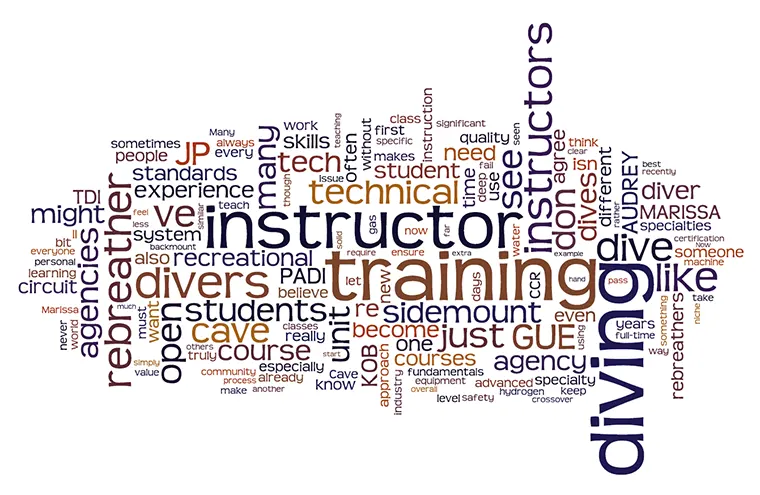
KAS: Step out of the dive chamber and into the technical command center—this isn’t just theory, it’s lived experience in extreme environments. Now, with that raw expertise in mind, here’s the million-dollar question—if you could hit rewind, would you choose this dive instruction journey all over again?
AUDREY: I fear the day this journey might end, but there’s something wonderful about feeling like you’re not really working because you’re so passionate. When I became an instructor, I worried that teaching might become a routine and sap the passion out of diving. I’ve kept a clear distinction between diving for myself and teaching, and I even challenge myself as a student to improve my own skills. So yes, I’d absolutely do it again. This profession makes you feel essential—you’re far more than just a replaceable cog in a corporate machine.
MARISSA: I’d do it again in a heartbeat—I genuinely love what I do. I often joke that I have to pinch myself because I can’t believe I get to spend each day in one of the world’s most amazing environments. It isn’t always easy—there are plenty of behind-the-scenes challenges—but showing people the wonders of diving makes it all worthwhile.
JP: I’d do it again, for sure. It’s truly a lifestyle. My best friends are in diving, and I teach year-round, traveling wherever conditions are best. While many see this as a dream job, deeper courses and overhead training come with serious responsibility. I also relish challenging myself with new courses and exciting dives in unique places—that’s what makes this job so rewarding.
KOB: I agree with everyone. Student divers often see the dream, but they don’t see the extensive behind-the-scenes work—blending gases, prepping equipment—required to ensure a great experience, whether they’re training here or in Mexico.
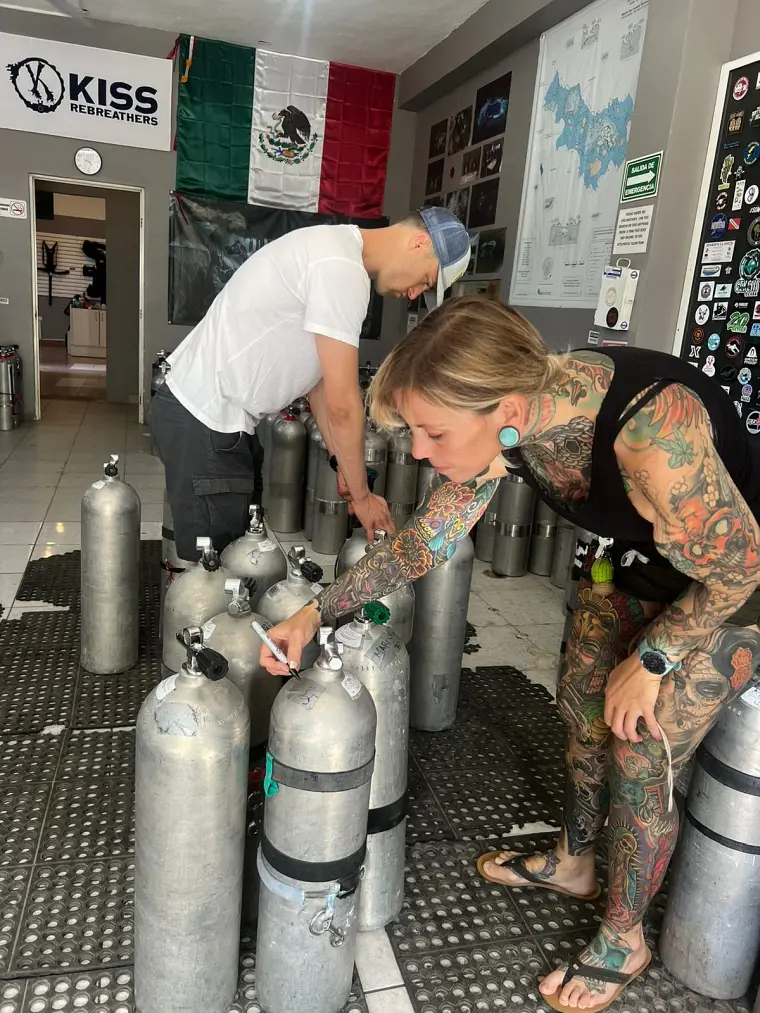
KAS: There’s a classic joke: “What’s the difference between a large pizza and a dive instructor? A pizza can feed a family of four!” Yet your skills feed far more than just appetites. Many wonder if dive instruction is a viable full-time career or if you need a fat bank account to get started. You’ve chosen the full-time path—so, guys, what’s it really like turning your passion for diving into your FULL TIME profession?
JP: I was fortunate—I’ve been an instructor since my 20s, teaching for various organizations while running my own television company in Amsterdam. I jumped on the GUE wagon early as the first GUE instructor in the Netherlands, benefiting from being the only fish in the pond. After 18 years in television, I decided to dedicate my life to diving and teaching, selling my share [of the television company] to fund my full-time career. Success came from building a sustainable, active community both locally and internationally, and by finding a niche that bridged media with diving. Today, my classes fill up almost all year. Within GUE, and effective marketing, along with a clear niche, lead to success—and many of my colleagues exemplify this.
AUDREY: My background is different—I spent about 15 years in the corporate world before switching careers at 34. I recognize that as I age, I might need to shift roles. I love diving, but continuing as an active instructor forever might not be realistic. Eventually, I might transition to a different role within the diving community instead of teaching full-time.
KOB: Audrey, at 72, I still teach deep technical diving and rebreathers!
AUDREY: Wow! I’ll strive to maintain that energy, but as a very small person, I’m well aware of my physical limits. It’s not solely about my own condition; soon enough, a new generation will emerge, brimming with knowledge and strength, and I wouldn’t want to drag along students who could benefit more from a younger instructor. Therefore, I believe it’s wise—eventually—not to hold on indefinitely but to transition into a new way of engaging with the diving community, fully accepting that continuing in the same role might become physically unsafe or that I might no longer be fit enough to guarantee my students’ safety.
KOB: That’s a great point. Most of what I do now involves mentoring our younger staff, guiding them to become trimix instructors, rebreather instructors, and more—the very individuals who will one day follow in my footsteps.
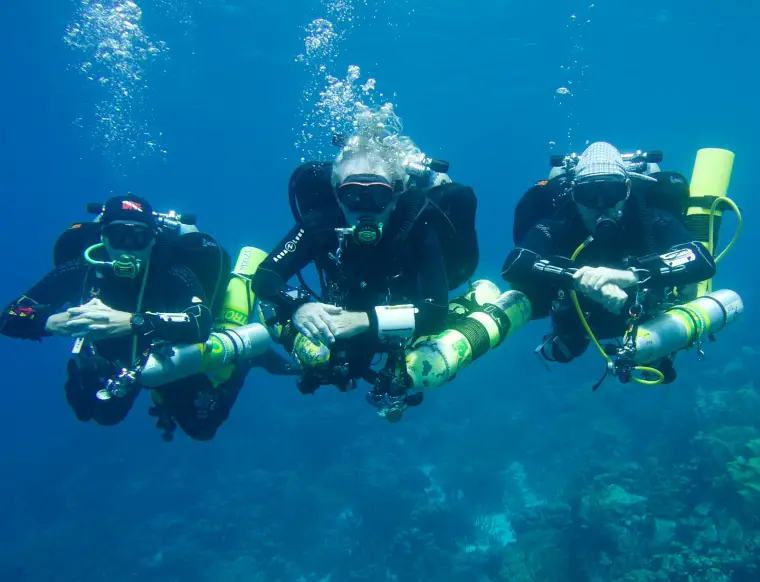
KAS: Do you believe your success as an instructor comes from pledging allegiance to just one agency—or do you thrive by dancing to multiple beats across several?
MARISSA: I began my career as a PADI instructor because PADI is the most recognized agency worldwide. However, since they don’t offer cave training, I had to explore other options and ultimately chose TDI. Based in Florida, TDI offers regularly updated materials and excellent responsiveness—I’ve been very pleased with them. Over time, as I became established as a technical and cave instructor, the specific agency mattered less. Divers ultimately seek quality instruction. For instance, TDI and IANTD structure their cave and rebreather classes with similar skills and requirements. When people contact me, I always advise them to select an instructor who fits their style: someone with a personable approach, who practices the type of diving they aspire to, and who upholds high standards to ensure thorough training.
It’s worth noting that most agencies are recognized globally—and especially in places like Mexico, many cave sites don’t even require a certification card. What truly counts is your ability to dive safely and competently, planning and executing dives with skill. The only significant difference I’ve noticed among agencies is the range in quality and standards. GUE, for example, excels in that regard: If a student arrives with a GUE Tech Pass, I know they already possess essential skills like buoyancy control, trim, and frog kicking, allowing me to focus directly on cave- or rebreather-specific training. For cave and rebreather instruction, many agencies maintain similar standards. Ultimately, the emphasis should be on finding a high-quality instructor rather than fixating on the agency name.
JP: I think it might be a bit different for us as an organization. I come from a background of teaching for nearly every agency worldwide, but now I teach for just GUE. Under our standards, once you teach Level 2 classes, you’re not allowed to work for other agencies. Our system is so standardized and holistic that I wouldn’t want to switch mindsets or philosophies based on the agency. Also, experience is key. I firmly believe that to be a good educator you must be an excellent diver first—and our agency enforces that.
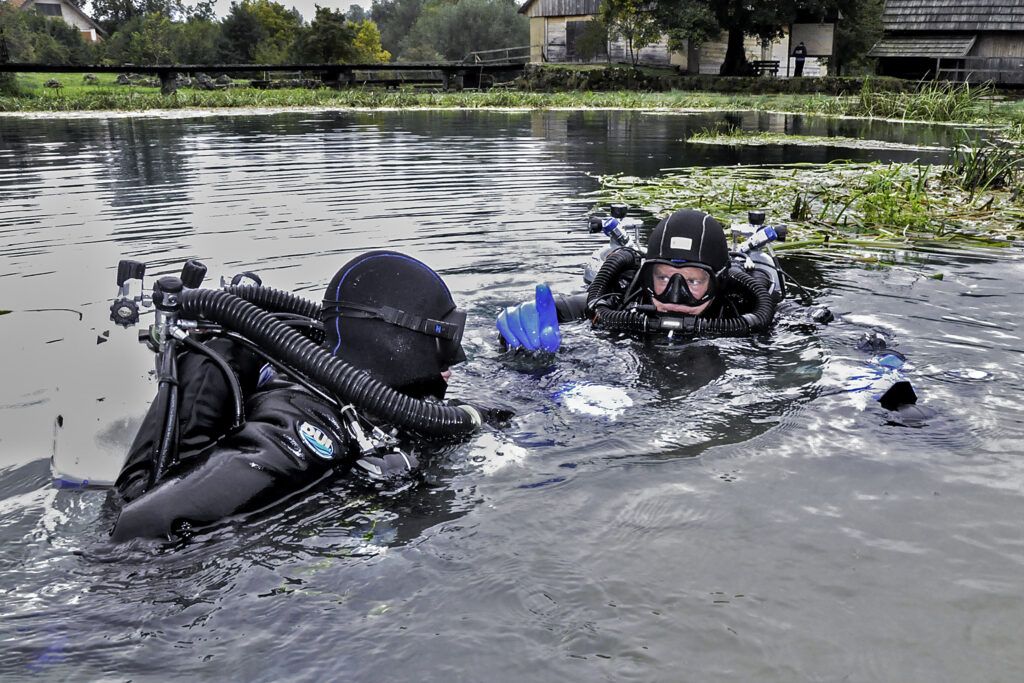
KOB: I totally agree with Marissa; it’s the instructor, not the agency. As both Marissa and JP mentioned, training standards and content are largely similar across agencies. We might have slightly different approaches, but ultimately it’s about finding an instructor you trust who fits your style. I’ve had students travel from the Netherlands, the US, Canada, and more through word-of-mouth and past experiences. Their confidence in me shows that my style works for them—and that’s the key.
AUDREY: I agree that the instructor matters most. Still, some agencies support their instructors in really helpful ways. After working with various agencies—PADI, ISE, TDI—I decided to narrow my focus to TDI. TDI offers solid standards and great freedom in organizing courses, which isn’t common in every agency.
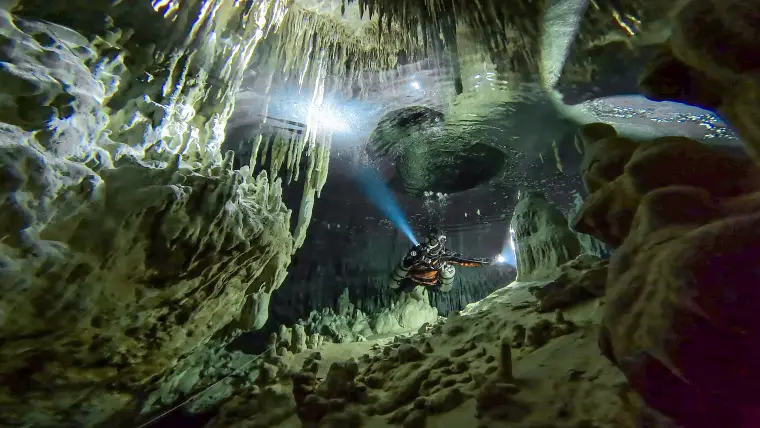
KAS: Some say that dive instructors, pressured by finances, feel compelled to pass every student—no matter if they’re truly ready—just to keep them from switching to a rival. Is this just a myth, or is it a real undercurrent in the industry? Are rock-solid safety standards sometimes forced to wrestle with profit motives and the constant fear of losing students?
JP: That’s a very good question. In our community, quality control is extremely high. Part of the certification process means we’re all interconnected: If I pass someone in a cave or tech class who’s clearly not ready, they’ll go out and dive with others in our community and reveal gaps in their skills. That would damage my reputation directly as their instructor. So, there’s a strong incentive not to pass someone who doesn’t meet the standards. Within our system [GUE], we can absolutely fail a student. We can also give a “provisional pass,” where the student has a set timeframe—say six months—to work on specific areas. Then, they come back to me or another instructor to demonstrate they’ve overcome those deficiencies. I’d say maybe one in three or one in four of my students either fails outright or goes the provisional route. We keep a high bar and don’t just push people through if they’re not meeting the requirements.
AUDREY: Yes, one constraint in our industry is that courses are often structured within a fixed timeframe, which can hinder some students from reaching their expected level. Inspired partly by what I saw in Mexico—where courses are charged per day—I switched things up. Instead of a rigid four-day package, a course can extend if a student needs more time and possibly a bit more budget. It’s my job as an instructor to ensure students don’t fail simply because of an arbitrary schedule. I also believe the qualification process itself is crucial. I appreciate agencies like GUE where regular re-qualifications help maintain the skills developed during a course. Not everyone can practice consistently, and technical diving requires continual practice. I often say it’s like going to church: If you’re into technical diving, you need to go “every Sunday.” Many who pass a course today could fail the same course a year later if they don’t keep up their skills. Ensuring safety over time is just as important as meeting standards at certification.
MARISSA: So, I think you see that in the recreational world, especially where people work for dive shops: They want to churn out numbers because that’s how they make their money. If someone’s on vacation, the shop might just push them through. Unfortunately, you see it in the technical world, too. But like Audrey mentioned, I charge a daily rate and let students know, “This is the number of days the agency says it can be done. This is how many days I personally recommend, but if I’ve never been in the water with you, I can’t be sure how long it’ll take.” I also don’t like to say I fail anyone. Most of the people who don’t pass with me either give up or have an honestly poor or unsafe attitude which makes me uncomfortable certifying them. Otherwise, I’m happy to keep working with someone until they can be safe in the environment they’re training for.
That said, there will always be an instructor out there willing to sell a card. Those people have that reputation, and they exist. I’ve decided not to be that instructor. I am serious because it’s an unforgiving environment. I want to make sure that, when I certify someone, they have every skill needed to be safe in caves or on rebreathers. I want to sleep at night knowing they’ll be as safe as possible. Those who really care about quality training will seek me out. People who just want a cert card won’t bother with me, and that’s fine.
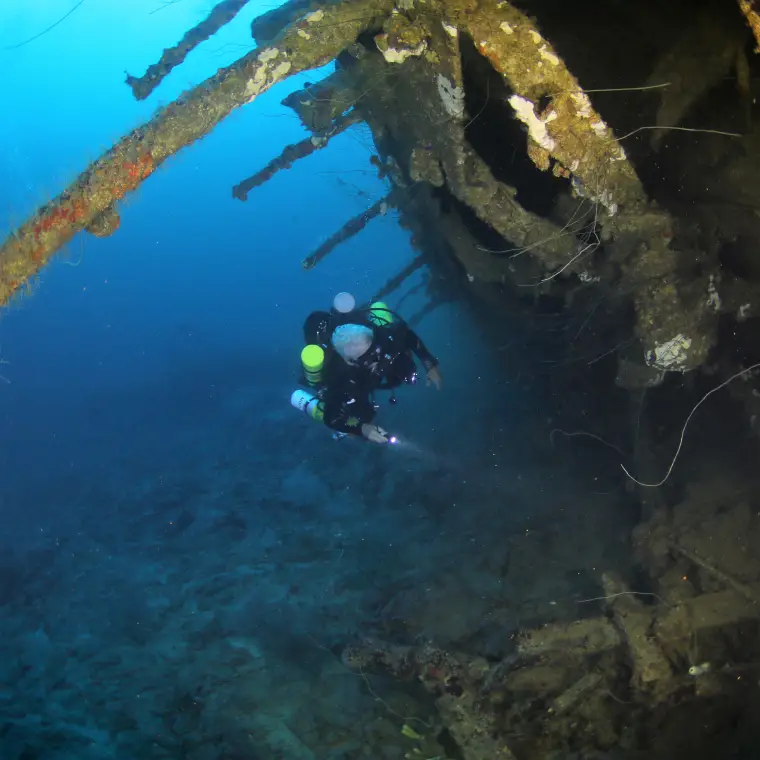
KAS: Kevin, I’m not trying to point fingers, but PADI often takes the blame—or is at least associated with the myth—of “inability” to fail students. From your perspective, knowing the agency more intimately than some of us, what’s your take?
KOB: I completely agree and echo Marissa’s point. This issue is far more prevalent on the recreational side than in technical diving. As Marissa mentioned, overhead environments are unforgiving. While I don’t fail many students outright, I do let them know when they need extra work—and I’m more than willing to invest that extra time. Over the years, I’ve come to view it as having my name on that card. If a student ends up diving elsewhere and it turns into a disaster, I don’t want my reputation on the line. I want my students to be truly competent and safe—even if that means extending their training. People learn at different paces and in various ways, so we should never hesitate to give them the extra time they need, especially when we’re sending them into a challenging environment.
KAS: Failing could save lives—we all know that. Now, let’s talk rebreathers. Their popularity is skyrocketing, yet statistics still show a higher fatality rate per dive. Is it mainly a training issue, or is there another factor at play? What’s your personal take on the current state of rebreather training?
MARISSA: Rebreathers… they’re a controversial subject. Many people have strong opinions and are initially scared of them. But, like any tool, they require practice and precision—you need to dive more frequently to keep your skills sharp. I believe many fatalities occur with divers who don’t use rebreathers regularly; perhaps they only dive a couple of times a year or only on vacation. Since a rebreather is essentially a “mixing unit on your back,” there’s far less room for complacency than with open circuit, where the gas is static. Rebreathers open up many possible failure points.
We hear about accidents involving on-off sliders or cases where someone forgets to turn on their O₂. Ultimately, the number one rule is: Always know your PpO₂. If you pay attention, you can catch problems—like an O₂ bottle left off—before they become dangerous. It’s not that rebreathers themselves kill; it’s the operator’s mistake. There’s simply less margin for error with a rebreather. I do think training is getting more structured and stricter, but it’s still very much a work in progress.
KAS: Sure, it’s not the rebreather that’s killing people—complacency is the real enemy. And, let’s face it: Rebreathers open up entirely new horizons, tempting divers to push into realms they’d never dare go on open circuit.
AUDREY: I don’t completely agree with the phrase “the machine isn’t killing people.” As a safety diver on extremely deep dives—200 m/656 ft plus—there are valid concerns about whether some units work properly at those depths. A unit can fail in many ways. I’ve experienced issues with my gear—it wasn’t initially bulletproof. Had I not adapted it, it might have killed me. Of course, PpO₂ monitoring is crucial, but if something goes wrong at the wrong time…
MARISSA: I see your point but, ideally, you should have enough bailout gas, a solid dive plan, and sufficient experience before attempting that kind of dive.
AUDREY: True, but sometimes by the time you realize there’s a caustic cocktail for example, it’s already too late.
MARISSA: Sure—but there are usually warning signs like gurgling in the loop or odd cell readings. However, rebreathers have led many divers to attempt dives they wouldn’t consider on open circuit. Some skip building solid experience and jump straight into advanced rebreather and scooter setups. That, in my opinion, is a significant problem, though ultimately it comes down to the individual diver.
AUDREY: I’d say it’s a mix of three factors: The diver’s skill and understanding, the training and experience they’ve built, and the reliability of the unit itself. Even the best training can’t help if your unit malfunctions and you don’t catch it in time. I see many divers who don’t fully grasp the physics, theory, or proper management of PpO₂ and CNS—they just rely on the rebreather’s readouts.
MARISSA: And if they don’t understand the basics, who certified them? That really underscores our earlier point about the responsibility of instructors in ensuring students truly learn what they need.
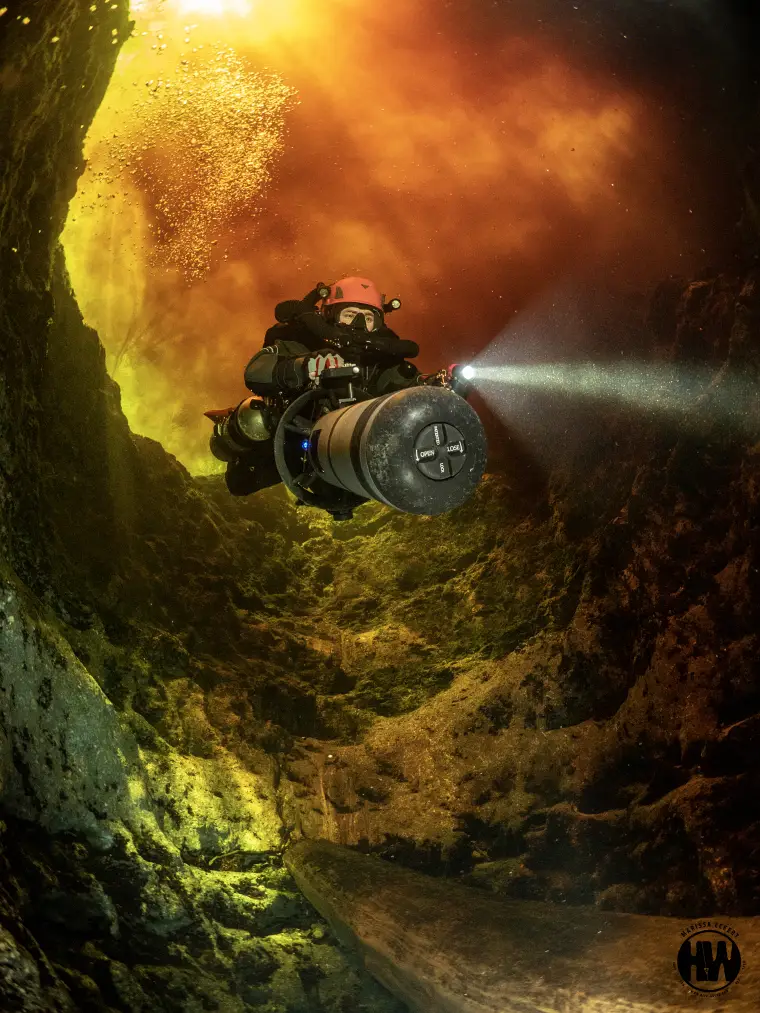
KAS: Exactly. Here’s my stance: Deep-level rebreather training should be open only to divers who’ve proven themselves on open circuit. It doesn’t make sense to jump straight into, say, 100 meter hypoxic trimix training without first handling that dive on open circuit. As a diver and critical thinker, if you’re depending on a bailout, you must know how to manage open circuit in a crisis—that’s how I see it. What do you all think?
JP: We’ve often been criticized for jumping on the CCR train a bit late. Eventually, we decided to “build” our own unit—which comes with big tanks and a lot of clunky gear, making it a bit harder to handle. However, what’s super important—and has already been emphasized—is that many people tend not to be conservative enough in their training approach.
We completely revamped our training process recently. Now, if anyone wants to take CCR training with us, they must first complete a CCR Fundamentals class. This class focuses on recreational limits in open water, Loop Volume, understanding the unit, and using PpO₂ correctly. The big advantage of our approach is that it utilizes the same equipment configuration divers are already familiar with from open water—the wing, back plates, long hose, and necklace. The only additions are a controller, a loop, and a head-up display unit, which make transitioning to managing a CCR a bit less painful. Furthermore, we require students to complete 50 dives in open water under relatively recreational conditions before progressing to the next level of training.
Over the years, I’ve found that the unit we’re using is extremely reliable. As my friend Mario [Arena] used to say, “It must be a fantastic machine if it keeps all the idiots alive.” Essentially, the rebreather doesn’t need a lot of user intervention; if you ensure everything is set—everything’s open, batteries are charged—it will just keep doing its job. But this reliability can foster complacency, and that’s a major issue in rebreather diving. It’s something we focus on heavily in our training.
KOB: Yes, full disclosure—I love my rebreather. Most of my diving is now done on my unit, and I’ve taken it on some pretty aggressive dives. I agree with the other panel members: Complacency is what kills. I also disagree with PADI, my agency, for letting divers start tech training directly on a rebreather without first establishing a solid open circuit foundation.
Stratis, you hit the nail on the head. I entered the rebreather scene a bit later, already an instructor trainer for 100 m/330 ft open circuit dives, and that open circuit foundation truly informs my approach when transitioning to rebreathers. I’m very conscious of what I need from a bailout standpoint when diving 100 m on a machine versus open circuit—you have to carefully plan your gas, gas switches, and other contingencies, even if you hope to never use them. For that reason, I’d like to see PADI require some level of open circuit tech experience before allowing divers to begin closed circuit training. That’s what we encourage here. On the other hand, I truly love my machine. Anytime I dive deeper than about 40 m/130 ft, I’m on it because it’s exceptionally reliable.
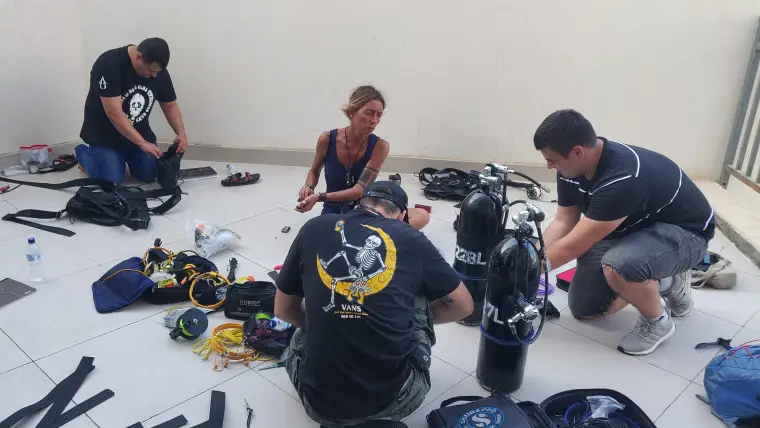
KAS: I agree—I feel safer on my unit too, though that might be personal. Jeff Bozanik recently pointed out that our industry seems to have taken a wrong turn. “With specialized training courses for every rebreather model—where switching to a new unit means redoing all the steps…” It’s become a hot topic. In some cases, instructors must dive on the same model as their students instead of following a unified, system-based approach. What’s your take on that?
KOB: That’s a tough question. In PADI’s system, instructors are required to use the same machine as the student—especially in entry-level or 40-meter tech courses. This uniformity makes demonstrations clear. As divers gain more experience, however, the benefit of using the same unit diminishes. PADI’s crossover course helps avoid starting from scratch on a new unit. In entry-level training, using the same machine has clear value, much like using the same configurations in backmount or tech sidemount training.
AUDREY: I see two sides here. For entry-level training, both instructor and student should be in the same configuration to build a solid foundation. At advanced levels, though, I don’t see much added value in forcing instructors to match the student’s unit. It’s confusing when high-level divers switch units via a simple crossover without proper demonstration—it feels like starting over.
JP: For our system, it isn’t as big an issue because we use the same unit throughout our progressive training. We start with CCR Fundamentals, move to CCR Tech 1 (similar to open circuit Tech 1), then CCR Tech 2—which incorporates elements from our open circuit programs—and finally progress to CCR Cave and beyond. The instructor always uses the same equipment, so there’s no need to switch.

KAS: JP, I’m curious about your personal perspective—beyond your role as a GUE representative, as an individual diver. Do you think instructors should be required to use the same rebreather unit as their students?
JP: Well, the philosophy behind it is that if you want to expand or change, that’s up to you. For me, I don’t really feel the need to switch because I’m not being forced by any marketing or market demands, nor by peers using different units. I came from the RB80 days—back in what I like to call “the Jurassic days”—and the crossover from RB80 to CCR was painful. Right now, I’m happy and comfortable with my current setup because it allows me to do all the dives I want, whether that’s 100 meters plus, deeper excursions, or more technical dives, and also to teach across various curricula.
MARISSA: I definitely agree with what’s been said, especially at the early levels of training. It’s vital for the instructor to use the same unit as the student initially. Then, as you progress—take TDI’s cave training, for example—I don’t necessarily have to instruct on the exact same unit configuration, but I must be certified on the unit the student uses so I’m intimately familiar with it. Many backmount units are very similar; they feature manual add valves in the same positions, identical scrubber canisters, and so on, which creates consistency.
Some agencies accept that familiarity with a unit is sufficient, but I see both sides. On one hand, an instructor who is well-acquainted with your unit can add significant value to your training. On the other hand, I often have to ask students, “Where do you plan on diving with this rebreather?” With so many different models available, it’s critical to consider the instructor from the start. For example, if you aspire to become an advanced mixed gas instructor with TDI, you might be very limited if a particular rebreather model is taught by only one instructor—especially if they aren’t a good match for you or are based far away and only operate in cold water. This unit-specific approach can restrict your options for advanced training.
I believe there could be benefits to a system where the instructor isn’t required to use the exact same unit—because sometimes you may gain more from a class with an outstanding instructor, regardless of their equipment, than from someone tied to a specific model. It’s unfortunate because divers invest significant time and money into learning rebreather techniques only to later struggle to find the right instructor for advanced training. Often, the decision to dive rebreathers is driven by marketing, which adds another layer of complexity.
KAS: How would you evaluate our industry’s overall performance in tech diver training? What do you see as our biggest weaknesses, and do you think instructors who fall short are being held accountable—or even removed—from the system?
KOB: That’s a loaded question. In my 30 years, I’ve seen the instructor development process become somewhat diluted. In the PADI system—the one I know best—you used to need instructor-level theory knowledge just to become a divemaster. Now, that bar is lower, which makes training new instructors more challenging—especially in tech or rebreather diving. Many divers jump from having 30 open water dives straight into a recreational rebreather course without fully understanding the hazards. One benefit of rebreathers is that their detailed pre‐ and post-dive procedures force divers to slow down and think. But, overall, the issue is complex.
JP: In our system, we’re very specific about our approach to instructor training and quality maintenance. As Marissa mentioned, when you have a fully tech-trained student, you can assume they have reached a certain level of knowledge, understanding, and skill. We also require divers to stay active by re-qualifying for their specific levels on a regular basis. For instructors, there’s a re-qualification process every four years, which includes an Instructor Evaluation (IE) covering field drills, academic sessions, personal diving level, and scenario management. Sometimes this retraining spans a full week. If an instructor isn’t performing up to standard, they are retrained or re-evaluated—something I strongly support.
We also mandate an experience component. For each curriculum we teach, we require at least 25 experience dives beyond the standard training. I personally teach nearly every curriculum in GUE—cave classes, tech diving, CCR—and constant personal diving keeps my skills sharp. Furthermore, to become a tech instructor in our system, you can’t simply cross over from another organization. Our crossover program requires you to first become a Fundamentals (or recreational) instructor and then build up both instructor and personal diving experience before progressing to more technical levels. We maintain a tight pulse on these standards—something I didn’t see with other agencies like TDI, IANTD, PADI, or SSI. This consistency in quality and education was a major eye-opener that made me commit to our approach.
AUDREY: From a technical standpoint, I fully agree with what JP stated about the crossover process. I see too many different protocols from one agency to another, which is unfortunate for divers. In our technical diving community, the same protocol should apply regardless of the agency; yet, there are far too many variants. That’s something I truly value about GUE—as a GUE diver, when you meet another GUE diver, you don’t need lengthy discussions about which skills will be developed; it’s always consistent. With other agencies, you often have to engage in detailed pre-dive briefings to ensure everyone is on the same page. Even within one agency, the variety can sometimes jeopardize a dive.
MARISSA: I agree that GUE has set higher standards than most. I’ve seen cases where someone from IANTD accumulates every possible rating, then crosses over to TDI and even becomes an instructor trainer on a rebreather course—despite never having owned or dived that rebreather. That’s unacceptable. There’s a lot of politics and drama in some regions, where instructors criticize each other behind closed doors. Worse, there are instructors from whom you can simply buy a certification card. As instructor trainers, we shoulder a huge responsibility to cultivate quality instructors, and when money talks, standards can suffer. We must hold ourselves to a higher level and work together—even if it’s challenging—to improve overall instruction quality. I recently had an advanced trimix student who couldn’t even dump gas properly from his drysuit. How does someone reach that level without mastering basic, essential skills? Clearly, we need to address this because, although more instructors are being certified, overall quality is dropping.
KOB: Marissa makes excellent points. One issue exacerbating the problem is that we sometimes view each other as competition rather than collaborators. Down here on Bonaire, our group of instructor trainers is very cooperative—we coordinate exam dates, plan events, and share information. I genuinely believe that adopting the mindset of “a rising tide lifts all ships” will benefit everyone, regardless of which instructor trains the divers.

KAS: Put on your blunt-truth drysuit for a moment. On a 1-to-10, “Would-I-trust-them-with-my-life?” scale, where do the average tech instructors minted by your agency score—and what number would you slap on the competition’s instructors?
JP: Within our own agency—specifically for our tech programs—I’d rate my fellow instructors at eight or higher. We’re a small organization, so we all know each other; if someone delivers a bad class, word gets around fast. As for instructors from other agencies, it’s hard to give a number. I’ve seen tech training from other systems, and it’s not that the instruction is inherently bad—just different. Our methods are extremely strict and standardized, so sometimes instructors from other systems seem to miss key information or use a different approach. That isn’t necessarily their fault; it just makes it hard to compare on a numerical scale.
MARISSA: I agree with JP. I’d rate GUE instructors around an eight, given my extensive travel and experience with GUE divers; consistently, the quality of instruction is top-notch. Of course, there are occasional subpar GUE divers, but those are rare. Other agencies, such as TDI or IANTD, are more variable—while some instructors are outstanding (a ten, perhaps), others are not as committed, averaging around a five or six. This mixed bag is partly because many instructor trainers certify new instructors without maintaining rigorous standards. That’s one reason I’ve never wanted to become an instructor trainer myself.
AUDREY: I agree with JP and Marissa. From a GUE perspective, tech instructors consistently score around an eight. Many also hold qualifications with agencies like TDI, but their GUE training elevates their overall level. With other agencies, I often find that instructors are certified in multiple disciplines. This can dilute their expertise, making them generalists rather than specialists—and in technical diving, specialization is crucial.
KOB: Ultimately, it comes down to the individual instructor or instructor trainer rather than the agency. I don’t have a perfect way to grade GUE overall because, for instance, our strong GUE operation here on Bonaire is top-notch, and we frequently exchange information. With other agencies, such as TDI, I see a lot of crossovers. It’s not a slam on TDI; it just means that while some TDI divers are excellent, others are less proficient. That variability reflects more on individual instructors than on the agency as a system.
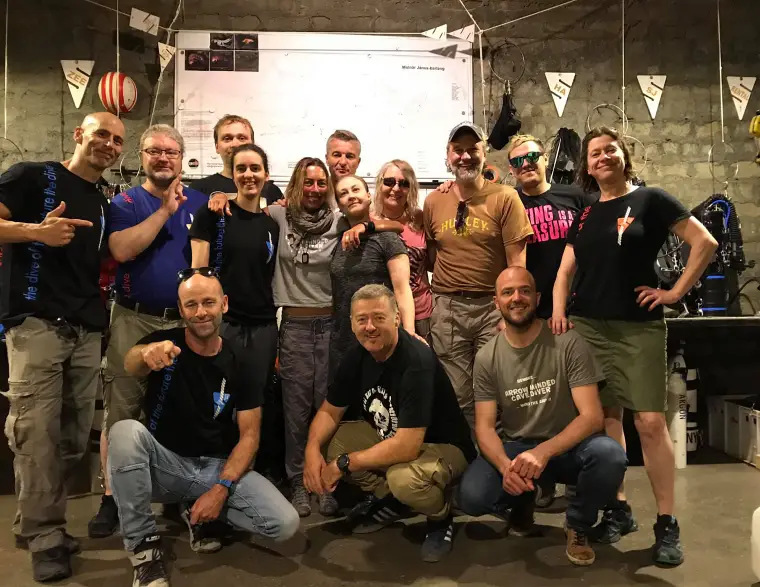
KAS: GUE’s clearly racking up the points, but let’s switch currents. These days, the dive world is awash in ever-narrower “specialty” cards. Are agencies honestly closing real skill gaps, or just riding the latest fad and printing plastic? Think “mine diving” badges while seasoned cave divers roll their eyes. Is this evolution—or certification inflation?
MARISSA: Definitely, with recreational specialties, many seem more like a joke—no offense to PADI, but specialties like “zombie diver” or “underwater juggling” have become laughingstocks. You can literally sign up for a specialty in anything these days. It can be fun, but does it really add value? When I became an advanced open water diver and then pursued my master diver rating, I even did the blue corner specialty from Palau. Did it fill a training gap? Not really—it was more of an extra perk.
In technical diving, however, additional classes tend to fill genuine gaps. I definitely think cave DPV, cave stage, cave sidemount are all very valuable classes. In tech diving, these specialties address real needs, whereas in recreational diving many have gotten out of hand.
KOB: I completely agree with Marissa on tech diving. On the recreational side, though, I’ve authored several specialties, and there is a market for bite-sized learning. For example, PADI’s underwater navigation specialty helps divers who get lost easily. Here on Bonaire, we often tell recreational divers, “When you head out to the reef, if it’s on your left coming in, it’ll be on your right leaving,” because many simply don’t know how to use a compass properly.
I even created a “shore diving” specialty because many visitors have never dived from shore—even though Bonaire is known as the shore diving capital of the world. And I developed a lionfish hunting specialty to help address a local invasive species issue. That certification even lets them hunt lionfish with a guide without extra training. So, while some recreational specialties might seem frivolous, they can provide targeted learning benefits. And in tech diving, such as tech sidemount, there’s genuine value because it involves managing multiple bottles and complex equipment setups.
MARISSA: I just want to add that it all comes down to the instructor. A well-taught specialty in shore diving or navigation can be extremely valuable. I remember when I was learning to dive, I relied heavily on a guide because I was so fearful of getting lost. A specialty course that taught proper navigation was incredibly helpful. Recreational specialties that keep divers active and continuously learning are important, but ultimately the quality of instruction is what matters most.
AUDREY: From a recreational perspective—and though I haven’t been deeply involved in recent years—I often see many recreational specialties as little more than money-making tools for agencies. Some specialties are valuable, but others, like peak-performance buoyancy, seem redundant when buoyancy is already a core part of initial training. In technical diving, however, specialties are usually more focused on securing specific skills, and I hope that the technical side doesn’t become as fragmented as recreational diving.
JP: I’m a bit old school, so here’s my view. When I took my first GUE class in 2000, there were only two types of classes: cave and tech. Later, Fundamentals was added. Now, the landscape has become very fragmented—we see deep primers, rescue primers, dry suit primers, doubles primers, and so on. What were once broader courses in foundational and recreational diving are now broken into smaller segments. These additional courses can smooth progression but also make things less clear for students. We’ve received some criticism for that.
AUDREY: JP, as a devoted sidemount fan, I have to ask: I was thrilled when GUE finally launched its sidemount cave course, yet I was a bit surprised there wasn’t a sidemount fundamentals course first.
JP: Most of our divers are very comfortable with doubles in their usual environments, so sidemount is seen as a specific application. The prerequisite for our sidemount course is being a Cave 2 diver with at least 50 experience dives. Since the configuration and planning are so different, we treat it as a separate module. It’s also not among our most popular classes, so in terms of numbers, it doesn’t justify a dedicated fundamentals course. I took the sidemount course with Chris le Maillot and David Rhea as my team mate—a very intense class due to its differences—and while I really liked it, it remains a niche area for me.
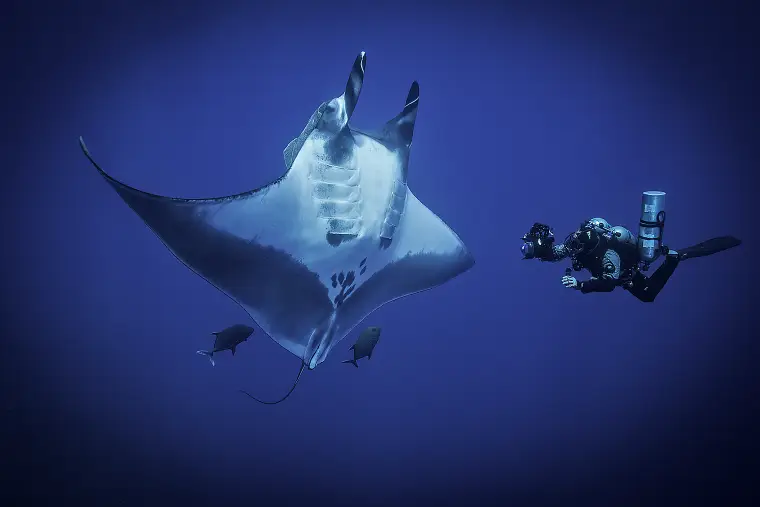
KAS: Perfect setup, Audrey—this was next on my list. JP, you said GUE’s sidemount track is “niche” and not exactly a money-spinner. But isn’t that a self-fulfilling prophecy? If the door only opens after Cave 2, no wonder few walk through it. Letting students start their journey in the kit they actually love—right from Fundamentals—could blow the doors wide.
And here’s the second curveball: We ask lifelong backmount devotees to swap rigs, then tackle razor-thin restrictions at Cave 3 levels? Doesn’t that trash their muscle memory? Shouldn’t there be a gentler on-ramp—some mellow sidemount cave dives—before we fling them into the tight-and-advanced stuff?
JP: I think we deliberately place sidemount training on the outer edge of our cave training. By the time a diver enrolls in our sidemount course, they’ve already completed Fundamentals, earned their Tech rating, done Cave 1 training, logged at least 50 dives, and finished Cave 2 training. They’re well-prepared for cave diving, and the sidemount course mainly addresses equipment-specific issues. We don’t force them to relearn all the fundamentals; it’s just an adaptation to a different gear configuration. I understand and respect this philosophy.
AUDREY: I want to step in here. Coming from a backmount background in my technical training before transitioning to sidemount, I’m glad to have both options. I can then choose the best tool for each dive—be it for cave, deep, or wreck diving. A few years ago, I joined Inner Space Explorers (ISE) to be able to train on backmount, sidemount, or rebreather configurations. Not everyone is comfortable with backmount. I’ve seen divers in Mexico struggle with them—simple tasks like climbing stairs become difficult. For smaller or disabled divers, performing a proper shutdown on backmount is nearly impossible. Offering an alternative like sidemount gives them a much-needed option.
JP: Historically, sidemount hasn’t been integrated enough into our projects. Nowadays, more divers in Mexico train exclusively on sidemount while elsewhere it remains a specialized tool. Most of our divers are satisfied with our current progression, but I do believe we should consider offering sidemount fundamentals for those who need that alternative due to weight or transport issues.
KAS: Thanks JP. Kevin, rumor mills keep spinning, yet I’ve never heard a straight answer: Why doesn’t PADI run a full cave program?
KOB: There actually is a PADI cave course. At present, cave training is part of their “distinctive” category. They offer a “Cavern” specialty, along with “Intro to Cave” and “Full Cave” courses which are still considered distinctive specialties. In fact, I’m scheduled to do a Full Cave course with Jeff Loflin in the Dominican Republic soon—and I’m really looking forward to it.

KAS: But why hasn’t PADI embraced cave training as a core pillar like other agencies?
KOB: I think it’s coming. PADI wasn’t first with nitrox—I was an IANTD nitrox diver before PADI offered it—and they were also late to sidemount. I remember watching pioneers like George Irvine and JJ [Jarrod Jablonski] doing extensive sidemount work in the early days. On the technical side—and it’s similar with rebreathers—I don’t see PADI leading the way. They tend to be conservative, waiting until technologies mature further before developing comprehensive courses. In a way, they let others make mistakes and pave the way, much like in caving where rules evolve from accidents.
KAS: Any plans on that front? Do we have a date, or is it still vague?
KOB: No, you’re killing me, man—you’re killing me. But don’t worry, InDepth is likely going to be the first to know when it solidifies.
KAS: Jump ahead five years. Will open-water students be wearing AR masks and getting graded by AI? Which sci-fi-turned-real tech has you buzzing—and what prototypes are already splashing down today?
AUDREY: I hope not. It depends on your perspective. In recreational technical diving, I do see new technology—like advanced air transmitters—being applied, but not always in the smartest way. Sometimes a cheaper, reliable system works better than an expensive, high-tech one that can be prone to failure. While some innovations—especially in rebreathers, scientific equipment, or underwater photogrammetry—are exciting, I worry that other new face masks and gadgets might undermine the simplicity that makes diving enjoyable. Often these technologies seem designed more to expand markets than to serve a real purpose.
KAS: Absolutely—the human connection is the non-negotiable kit. After all, everything you’ve just said hinges on that instructor-to-diver bond.
MARISSA: I’m not aware of any groundbreaking advancements that excite me right now. Recreational divers often hype full-face masks for underwater communication, but personally, I prefer silence—if you have a solid dive plan, talking isn’t always necessary. Technology is progressing rapidly: More rebreathers and scooters are available and getting cheaper. Unfortunately, this sometimes means divers progress too quickly without building sufficient experience—they rush into the deep or complex dives without the necessary skills. We must remain cautious and let our experience grow gradually; diving should be enjoyable rather than a race to the extremes.
KOB: I suspect we’ll see significant evolution in how theory is communicated. Many agencies now use e-learning, which offers flexibility and allows students to study on their own schedule, but you can’t learn to dive solely from a screen.
One area I find promising is the potential for hydrogen diving. With helium’s rising costs and limited supply, I believe, within five years, we might explore hydrogen as an alternative, provided experts develop suitable decompression models for it. It could open new doors, although I remain mindful of its inherent risks.
JP: I echo my colleagues. We’re just launching an adaptive learning system for our foundational and performance diver courses, using AI to guide academic learning and free up more in-water time. Regarding gear, I recently tried a Halcyon Symbios rebreather with wireless transmitters and advanced displays. I’m a traditionalist—I like to see and feel my equipment—but I acknowledge that, over time, new technology will be adopted, especially in scientific applications like survey work and photogrammetry. However, I doubt we’ll see an all-AI rebreather anytime soon.
KOB: I’m curious how others feel about hydrogen. On one hand, I find hydrogen intriguing and progressive; on the other, its risks cannot be ignored.
AUDREY: Early in my diving days, I learned about hydrogen through experimental projects in France for deep commercial dives. Those projects sparked my interest in hundred‑meter-plus dives. More recently, influenced by Richard Harris’s adventures, I see hydrogen emerging—though I’ve given up chasing ever-deeper dives. I view hydrogen as a niche market that might find more application in commercial diving than recreational.
MARISSA: These are exciting times. When helium was introduced, it was seen as a “voodoo gas,” and deep air was considered best. Over time, we’ve evolved, and now we readily use helium. It’s inspiring that industry pioneers continue to push boundaries and help us progress. I ensure my students thoroughly understand cave diving fundamentals—like running a guideline and diving thirds—because if not for past near-misses, we wouldn’t be where we are today. Extreme dives may remain a small niche, but their influence on the industry is significant.
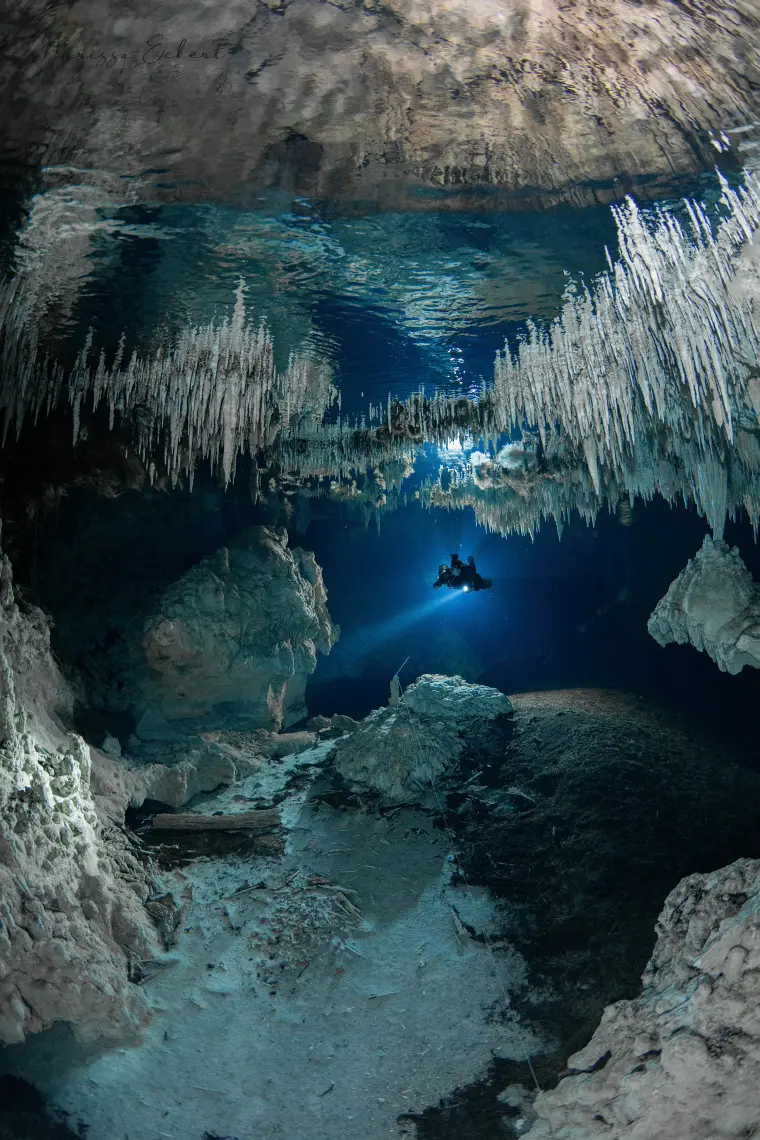
KAS: I’m glad I’m not the poor soul who has to underwrite the next-gen bailout algorithms! So, let’s end on a clean-slate thought experiment: If you could reboot our entire dive-training universe from zero, what would you rebuild differently—tougher prerequisites, mindset coaching, something else entirely? How would you overhaul the way we teach, test, and certify?
KOB: Oh God, you’re asking the oldest guy here to rethink everything! When I learned to dive in 1972 under NAUI, the courses were very militaristic—complete with drills like “ditch your gear” and underwater sprints. That “weed out the unfit” approach may have worked then, but I believe we’d reach a larger, more inclusive sport if we made diving accessible to everyone from the start. We’d eliminate those harsh drills and focus on building skills without discouraging potential divers.
AUDREY: I might be a bit idealistic, but I wish diving were more unified. It’s unfortunate that agencies develop increasingly separate training programs. A single standard system would reduce misinterpretation and crossover issues. Competition is necessary as a business, but too much fragmentation only complicates things—and can even make diving more dangerous.
JP: I’ll be generic here, but two things are key. First, “practice what you preach.” Too often, instructors barely meet the standard they demand of their students, especially in small specialty courses. Second, in technical diving, we sometimes let people in too easily. Not every diver is fit or capable of safely handling deep CCR, cave, or tech dives. Stricter industry control would be beneficial.
MARISSA: I agree with Audrey and JP. In my experience with GUE, students sometimes take courses from multiple instructors who use different methods. This lack of standardization can be frustrating. In GUE, you can dive anywhere in the world with a shared understanding. In other agencies, inconsistent pre-dive checks or signaling can really challenge a student’s learning. As a female instructor, I’ve faced doubt early in my career—people questioned my capabilities in what many see as a “good old boys’ club.” We must remain open, support diverse talent, and ensure that our training standards truly reflect the skills needed, rather than just “recreating the wheel.” I had a student who came for nine days of training but, right from the beginning, suffered severe anxiety. Ultimately, we changed what we were doing and just did cavern tours, which they felt comfortable with. It’s not good to push and feel the need to do something that makes you uncomfortable.
KAS: In wrapping up this intense roundtable, it’s clear that the path of full-time dive instruction isn’t for the faint-hearted—it demands constant learning, a relentless commitment to safety, and the courage to challenge the status quo. The insights shared by my four guests reveal a professional community that values not only technical excellence but also personal integrity and collaborative growth.
As the industry evolves, the call for rigorous standards and unified training becomes more pressing than ever. Whether you’re just starting or are already deep in the technical side of diving, these reflections offer a roadmap for elevating your craft and securing a future where passion meets precision in technical Diving.
Return to: So You Wanna be a Tech Instructor?

JP Bresser
JP Bresser is a seasoned technical diving instructor, cave explorer, and underwater documentarian with nearly three decades of experience. As a certified Global Underwater Explorers (GUE) Instructor, he is dedicated to advancing diver skills, safety, and underwater exploration. His expertise spans technical and cave diving, underwater photography, and videography, and he holds multiple GUE instructor and IT certifications—including Cave, Technical, and Closed Circuit Rebreather (CCR) diving.
JP has trained divers in some of the world’s most challenging environments and is the founder of Cave & Wreck Night, an annual event that unites expert cave and wreck divers with scientists. This premier gathering features presentations, film screenings, and discussions on exploration techniques and discoveries.
Beyond teaching, JP actively participates in international projects, contributing to the mapping and documentation of underwater cave systems, historical wrecks, and deep-sea environments. Notable projects include the European Karst Plain Project, the Mexican Cave Exploration Project, expeditions in the Balkans, the USS Atlanta wreck in the Solomon Islands, and deep-water research in Bermuda.
An accomplished underwater filmmaker and writer, JP shares his passion through articles, workshops, and social media, inspiring divers worldwide to explore safely and preserve our underwater heritage.
Video Links:
Social Links:
https://www.facebook.com/jp.bresser
https://www.instagram.com/jpbresser
Vimeo
GUE Profile
https://www.gue.com/diver-training/gue-instructors/instructor-resume?id=2458

Audrey Cudel
Audrey Cudel started diving in the south of France in 1994 and became passionate about deep technical diving in 2006. She changed careers 10 years ago as she got more involved in sidemount, cave diving training, and exploration projects. She is also a renowned underwater photographer whose style is known within the technical diving community. In 2012, she founded one of Malta/Gozo’s most famous technical diving facilities that she ran for
seven years before establishing her own company, AUDREY CUDEL TECHNICAL.
After 28 years of diving, she is actively operating in Egypt, Gozo/Malta, Mexico, Hungary, France, and Spain. Audrey is specialized in sidemount essentials, technical sidemount, cave diving training, and related equipment development and training. She has also worked as a safety diver and camera assistant on a number of technical diving events including deep diving world record attempts and cave diving documentaries. She is a brand ambassador and has been actively contributing to various magazines, agencies, and web publications with articles and photography support. Her spare time is dedicated to cave exploration, underwater photography/video, and the development of diving designs and equipment.
Links :
https://www.facebook.com/AudreyCudelTechnical
https://www.instagram.com/audreycudelphotography
https://www.youtube.com/@AudreyCudel

Marissa Eckert
Marissa Eckert is a passionate explorer and full-time technical diving instructor, photographer, and owner of Hidden Worlds Diving who specializes in cave, rebreather, and sidemount training. She currently lives and teaches full time in Tulum, Mexico. She brings a wealth of experience and knowledge in both open and closed circuit diving. Her major passions are teaching, exploration, and photography. Marissa is certified on multiple rebreathers and can teach the Sidemount Liberty, X-CCR, SF2, KISS Sidekick, KISS Sidewinder, and the Dive Rite Choptima. She also enjoys teaching other classes like DPV and stage. When she’s not teaching, she’s out hiking through the jungle to find new caves, working on new lighting techniques for photos, or traveling and exploring the world. From the day she got into diving 16 years ago, she has made it her life.
Links:
https://www.instagram.com/marissa_eckert_
https://www.facebook.com/marissa0429

Kevin O’Brien
Kevin O’Brien is a PADI Course Director, trimix instructor trainer and Hollis Prism2 CCR instructor. He cut his teeth tech diving in the US Great Lakes and now lives and teaches open and closed circuit tech diving on the Dutch island of Bonaire. Still actively teaching tech and rebreather courses at 72 years old, he has had the opportunity to certify more than 2,000 student divers, including 600+ professionals and 100+ tech divers. Over the years, he has been able to dive in freshwater and saltwater locales including the Great Lakes, Red Sea, Truk, Japan, Indonesia, UK, Canada, and extensively throughout the Caribbean. Most recently, he helped to create & launch VIP Diving’s Tec Diving Center on Bonaire.
Links:
VIP Diving
https://www.facebook.com/kevin.obrien.9022662
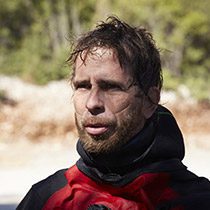
Stratis Kas, a Greek-Italian professional diving instructor, photographer, film director, and author, has spent over a decade as an esteemed Advanced Cave instructor, leading expeditions to extreme locations worldwide. His impressive diving achievements have solidified his expertise in the field. In 2020, Kas published the influential book Close Calls, followed by his highly acclaimed second book, CAVE DIVING: Everything You Always Wanted to Know, released in 2023. Accessible on stratiskas.com, this comprehensive guide has become a go-to resource for cave diving enthusiasts. Kas’s directorial ventures include the documentary “Amphitrite” (2017), shortlisted for the Short to the Point Film Festival, and “Infinite Liquid” (2019), which explores Greece’s uncharted cave diving destinations and was selected for presentation at TEKDive USA. Kas’s expertise has led to invitations as a speaker at prestigious conferences including Eurotek UK, TEKDive Europe and USA, Tec Expo, and Euditek. For more information about his work and publications, visit stratiskas.com.

